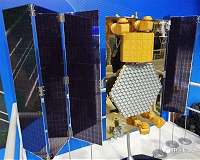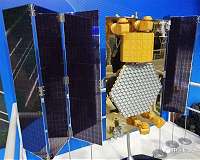News earlier this month that the Chinese company Qingdao Airlines had become the first airline in China to offer high-speed satellite internet marks a watershed moment for Chinese domestic satellite internet.
Using what is called a Ka band satellite, passengers on board will be able to enjoy access to high-speed internet in remote locations at up to 100 Mbps. Internet connections use the domestic organization China Satcom to maintain the frequency and connection required. It may soon be a technology that enables not just airline passengers, but countless people living in remote areas access to such services.
All over the world, satellite internet technology is fast being acknowledged as a potential game changer for a vast plethora of communication applications in remote areas.
The maverick entrepreneur Elon Musk’s Star Link satellites, first launched last year, are an example of the adoption of what are called LEO satellites, standing for low earth orbit.
LEO satellites typically orbit the Earth at a much lower altitude than traditional satellites, at around 500-2000 kilometers above the surface. Conventional satellites typically call their home at a more celestial 36,000 km. The reason for the skimming nature of LEO satellites is for lower latency, meaning that the delay of data transmission is much smaller and thus gives an advantage in internet connection speeds.
The London-based global communications company OneWeb, another organization with LEO ambitions, measured LEO satellite latency as just 32 milliseconds for the data to make the round trip, compared to nearly 600 milliseconds. This puts the connection speed of LEO satellites on par with landline connections. In China, the Hongyun Project is proposing to build a several-hundred-strong LEO satellite constellation by 2022, showering the night sky with the potential for high-speed remote internet connection.
Musk has stated that it is estimated that around 800 satellites would be required for a moderate internet connection, and therefore the sheer scale of investment into LEO satellites to advance projects worldwide is welcome. Numerous satellites are required for LEO internet connections, as due to their low orbit they revolve around the Earth extremely quickly-in under 2 hours.
This means that each satellite is capable of only providing a connection at a certain point on the Earth’s surface for a brief interval, requiring the need for numerous satellites to be produced to maintain steady connections. Investment into LEO technology has skyrocketed recently, with governments around the world including the Chinese authorities keen to invest. Advances in the technology needed to create smaller satellites and reusable rockets have reduced the cost of such ventures, leading to greater incentives to get involved.
In China, emphasis on LEO satellites to serve internet connections in remote regions is strong.
The Hongyun project, originally expecting to launch 156 satellites, now plans to have as many as 864 in space, maintaining a connection capacity of 8 terabytes. The hope, according to Application Director He Mu, is to eventually provide a chip for mobile phones that will automatically maintain a stable connection to satellite internet.
LEO satellites may become a common sight in our night sky within the next decade. The technology has been around since the late 1990s, however the scale and interest in the field now is unprecedented.
All over the world, countries are aiming to combine this rapidly developing area of technology with the benefits of high-speed remote internet connection for all.
Source: Xinhua News Agency
– Advertisement –


